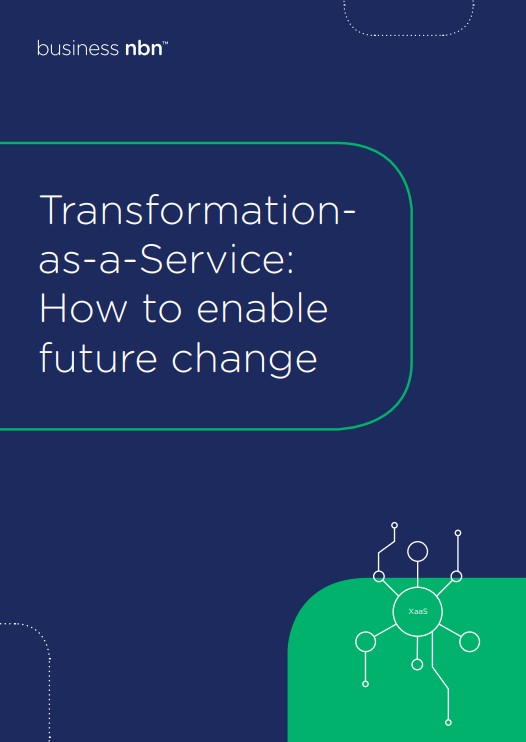
Big or agile? Be both with the right network
Being a big business – with multiple locations and potentially hundreds if not thousands of employees – can come with many benefits.
From market share to purchasing power, economies of scale and brand recognition, large businesses are usually seen as strong and stable, capable of dealing with the ups and downs of market cycles and consumer demand while remaining steadfast.
Yet, as 2020 has shown, no business is too big to be affected by societal and market shifts.
This tumultuous year has up-ended many beliefs about business and has forced organisations to quickly adapt their models or risk being left behind.
While these shifts may have started as interim solutions to accommodate lockdowns and travel restrictions, they proved that – with the right technologies and network in place – even large organisations can adopt an agile stance and stay responsive to changing internal and external needs.
Digital transformation drives agility
At its core, digital transformation aims to help create long-term business resilience, with technology seen as a way to become more agile and responsive to achieve this.
Many organisations have been making steady progress along their digital transformation journey over the past several years. Now, due to recent events such as the pandemic, the pace of change has accelerated, demanding businesses do in weeks what they might otherwise have accomplished in months or years.
For businesses, this means being able to pivot quickly in response to changing market and customer demands, and seize opportunities as they present themselves.
Internally, digital transformation helps deal with step-changes, such as the swift adoption and lasting impact of remote and decentralised work.
Thirty-two per cent of respondents to a Deloitte study of Australian businesses said agility was a main driver for adopting cloud services, while 30 per cent said scalability was also key.
Digital transformation can help to enable agility, and can be used as a tool to empower organisations to respond rapidly to opportunities and challenges.

A path to agility
Agility is a mindset and capability that can apply to organisations of any size. However, there are factors that can create challenges.
"Modern businesses are often looking to unlock digital agility, but it can sometimes be very difficult due to entrenched behaviours, internal bottlenecks or risk aversion,” says Kent Heffernan, Executive General Manager, Enterprise and Government at nbn.
“Network infrastructure can also be a limiting factor, as the right mindset won’t matter if you don’t have the right foundation and technologies in place to act on a transformation agenda.”
For example, traditional fixed systems use switches, routers and other physical infrastructure to manage network traffic. With capacity and data patterns fixed, adding locations or adapting to changing network demands can prove slow and cumbersome, limiting organisational agility.

These systems, though, are rapidly giving way to software-defined options such as SD-WAN in Australian organisations, which have the potential to enable more flexibility, scalability and simplified network management.
However, leveraging SDN capabilities to their fullest potential can be hampered by infrastructure that limits access to business-grade network features and fibre-based speeds.
For example, it’s hard to squeeze full value out of cloud-based applications without a network that helps ensure more smooth and effective application performance across the entire organisation.
Network choice underpins agility
The right network strategy plays an important role in creating an agile and resilient business, says Kent.
“As businesses look at their digital strategies to improve agility and build resilience, it’s critical they have the underlying network infrastructure in place that can support them to succeed in the future.”
Agile businesses are built on network infrastructure that is inherently flexible, while also providing opportunities to meet evolving customer needs and market pressures.
With the initial volume rollout complete, the nbn™ network provides the digital back-bone for Australian businesses to help lift their digital capabilities.*^ Added to this is recent investment in helping bring business-grade, fibre-based connectivity to more businesses, which will help facilitate innovation and make it is easier for businesses to evolve into the future.

business nbn™ wholesale features provide the foundation that helps enable technology and capability from the network up, with flexibility to scale as businesses grow.#
And because all businesses are different, it’s important to implement a network solution that can be tailored to individual business needs.
“No two businesses are alike," says Kent.
"The nbn™ network has been designed as a digital back-bone to support the wide variety of connectivity needs that residents and businesses have. Specifically, our business nbn™ wholesale solutions are designed with flexibility to enable service providers to meet the unique needs of businesses today and into the future.”
Adopting an agile mindset and implementing technology solutions that help businesses of all sizes stay responsive to future challenges starts with the right network serving as a springboard for transformation.
* nbn's initial volume build completion commitment was that all standard installation premises in Australia would be able to connect to the nbn™ access network as at 30 June 2020. This excludes premises in future new developments which would be an ongoing activity for the Company beyond 30 June 2020. It also excludes a small proportion of premises defined as ‘complex connections’ – which includes properties that are difficult to access, culturally significant areas and heritage sites – where connection depends on factors outside nbn's control such as permission from traditional owners, and where network construction to allow such premises to connect will be an ongoing activity of nbn beyond the build completion date.
^ Your experience, including the speeds actually achieved over the nbn™ broadband access network, depends on the nbn™ access network technology and configuration over which services are delivered to your premises, whether you are using the internet during the busy period, and some factors outside of nbn’s control (like your equipment quality, software, chosen broadband plan, signal reception, or how your chosen provider designs its network). Speeds may also be impacted by the number of concurrent users on the nbn™ Fixed Wireless network, including during busy periods. Satellite end customers may also experience latency.
# business nbn™ is not available on the nbn™ fixed wireless network.
